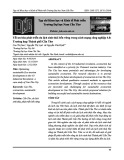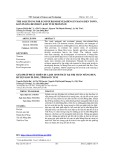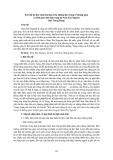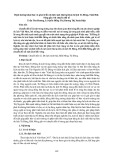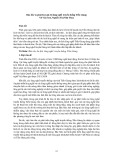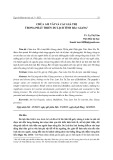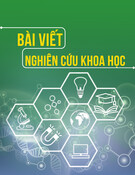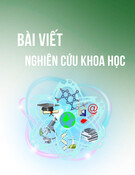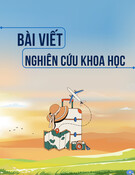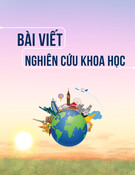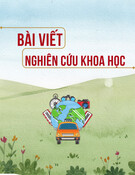
Trường Đại học Kinh tế Quốc dân
Khoa Du lịch và Khach sạn
Bài giảng
Du lịch sinh thái – Ecotourism
Người trình bày
PGS.TS Nguyên Văn Mạnh
Hà Nội tháng 8/2011

CHƯƠNG 1
XU HƯỚNG PHÁT TRIỂN CỦA DU LỊCH VÀ
LỊCH SỬ PHÁT TRIỂN CỦA DU LỊCH SINH THÁI
Mục tiêu của chương :
Sau khi học xong chương này sinh có khả năng :
•Nắm bắt được xu hướng phát tiển mới trong du lịch
•Hiểu được lịch sử phát triển của du lịch sinh thái
•Hiểu được ý nghĩa của phát triển du lịch sinh thái đối với
phát triển bền vững
Nội dung của chương :
•1.1 Xu hướng phát triển mới trong du lịch
•1.2 Lịch sử phát triển của Du lịch sinh thái (DLST) và
mối quan hệ giữa DLST với những thay đổi môi trường
toàn cầu

Xu hướng phát triển mới trong
du lịch
Vai trò của du lịch đối với nền kinh tế mỗi quốc gia
và trên toàn thế giới
–Hàng năm ngành du lịch tạo ra khoảng 6-7% việc làm trên
toàn cầu. Tại nhiều quốc gia ngành du lịch đang đóng góp
khoảng 5% GDP của cả nước.Con số này thực tế còn cao
hơn nhiều ở các nước châu Á như: Thái Lan, Singapore…
Số liệu thống kê cho thấy cứ 2,4 giây, ngành du lịch lại
tạo ra một việc làm mới.
(Theo số liệu được đưa ra bởi ông Tim Bartlert, cố vấn của UNWTO, tại
hội nghị “Du lịch - Động lực quan trọng phát triển kinh tế xã hội” đã
diễn ra tháng 05/2010 tại Hà Nội với sự tham gia của 300 đại biểu là
các quan chức du lịch cấp cao đến từ 17 quốc gia và vùng lãnh thổ
thuộc khu vực châu Á - Thái Bình Dương).

–Cũng theo dự báo, trong thế kỷ 21 này, số
việc làm mà ngành du lịch tạo ra sẽ còn
lớn hơn do nhu cầu về du lịch của người
dân trên thế giới ngày càng tăng. Vào năm
2020, dự đoán doanh thu của ngành du
lịch toàn cầu sẽ cao gấp đôi so với hiện
nay.

The sector now becomes the world largest industry in
terms of number of people participating, the employment
capacity, and the amount of resources generated.
According the London tourism Minister’s Summit
(November 2008),each year:
• Tourism generated 230 millions jobs- 10 percent of all
jobs globally- and is one of the top five sources of foreign
currency for 83 percent of developing countries.
• Tourism is expected to draw 1.6 billions international
travelers in 2020 (UNWTO’s tourism 2020 vision). This
sector has only recently grown in size, due to a
combination of historical circumstances.


